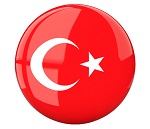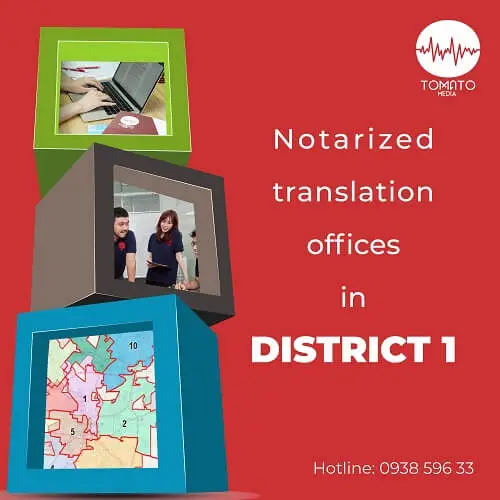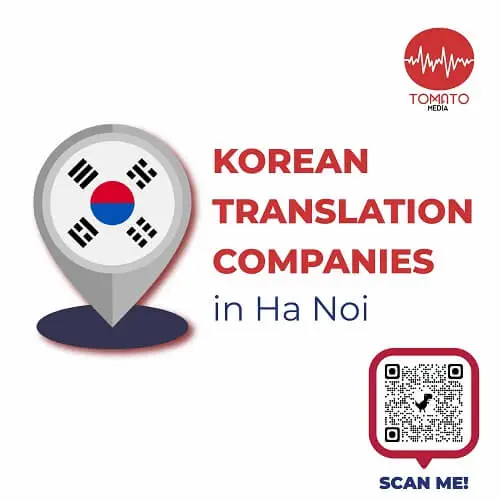The exchange and cooperation with foreign countries are increasing, which is followed by the appearance of many translation units for the purpose of translating various types of documents. The selection of credible notarized translation offices in District 1 is important to help: ✦ Ensure the accuracy of documents and records, etc. ✦ Documents, records, papers, [...]
Top 10 hardest languages in the world in detail
In the world, there are many languages, each with its own characteristics in terms of vocabulary, grammar, pronunciation, and different usage. Are you ever curious about what the hardest languages in the world are? Let’s find out through this article with Tomato Media.
NỘI DUNG (CONTENT)
How many languages are there in the world?
What is the hardest language in the world? Before looking for answers, we should know that there are a total of 2650 languages in the world, with more than 7000 dialects. Each language has its own peculiarities and is grouped into easy, medium, and hard groups. This level applies to both learning and translating documents or interpreting.
Compilation of the world’s hardest languages
Here are the 12 hardest languages in the world based on the criteria of vocabulary, grammar, structure, etc.
1. Mandarin (Chinese)
Chinese is a fairly common language, spoken by more than 1 billion people in Malaysia, Taiwan, Singapore, Indonesia, Thailand, Brunei, the Philippines, Mongolia, etc. The Chinese alphabet is composed of ideographs with traditional and simplified alphabets.
Chinese is ranked as one of the hardest languages in the world to learn because there is a writing system with more than 3000 different characters and to read and write fluently in Chinese, you need to memorize more than 10,000 characters and more than 3000 basic vocabulary words. Chinese grammar is not too complicated, but the tone, sound, and vocabulary are always a challenge for translators.
2. Arabic
The language is spoken by about 420 million people in countries within the Arab League, by minorities in neighboring countries, and in parts of Asia, Africa, and Europe. The Arabic alphabet has 28 characters, making it difficult for translators because the alphabetic characters use their own unique script. Additionally, Arabic’s word structure is extremely complex because one original word can generate a wide variety of derivative words that do not all have the same meaning.
3. Japanese
This is a language influenced by Chinese, so the Japanese alphabet system is also very diverse and complex. Japanese is by far the third-hardest language in the world to learn. The language is spoken by 125 million people in Japan and by Japanese migrant communities around the world. Japanese consists of three alphabets: kanji, hiragana, and katakana. There are also romaji, which are commonly used by people who use the Latin alphabet (e.g., Vietnamese). However, Romaji only helps Japanese learners remember pronunciation, not the official alphabet.
Learners, in addition to memorizing thousands of different characters, also have to learn to combine them to form words. It is the variety of characters and word combinations that make learning and memorizing Japanese vocabulary very difficult. In addition, the intonation system and honorific word usage also confuse many translators if they are not fluent in this language.
4. Korean
Korean is a Chinese-influenced language, spoken by more than 77 million people in Korea, the Korean Peninsula, and the North China region of China.
This language uses a different alphabet, writing system, and pronunciation compared to the Latin script, which is essentially an agglutinative language, so it will take a long time for the translator to memorize the letters and characters. This language uses a separate Korean alphabet called Hangul, with characters put together in blocks, including at least one vowel and quite unique consonants. In addition to writing, Korean also has many complex verb conjugations and difficult sentence structures to remember.
5. Thai
Thai (also known as Siamese) is a Tai – Kadai language family and is spoken in Thailand. Thai is ranked among the hardest languages in the world because of its complicated pronunciation and mouth shape. According to statistics, nearly half of Thai words are borrowed from old Khmer, Pali, or Sanskrit. Therefore, the writing system of this language has brought a great challenge for translators because you need to be fluent in the alphabet consisting of 44 consonants, 32 vowels, and 6 tones.
In addition, the Thai language is monosyllabic and uses tones. Therefore, this language will be difficult for interpreters who are used to saying long, strong words without specific tones.
6. Vietnamese
There is a saying that “even the strongest storms aren’t as scary as Vietnamese grammar.” Indeed, Vietnamese is the official language spoken by more than 97 million Vietnamese and Vietnamese expatriates. Vietnamese is considered by many foreign translators as one of the most difficult languages in the world.
Vietnamese is a member of the Latin language family and shares a script with it, making it relatively easy for people in other countries using the same alphabet to learn the characters. However, the grammar, intonation, way of addressing, flexibility in speaking and writing, and diverse homonyms of Vietnamese will cause many translators a headache.
7. Russian
Russian is the official language of about 258 million people living in Russia, Belarus, Kazakhstan, and Kyrgyzstan, as well as being widely spoken throughout the Baltic, Caucasus, and Central Asian countries. It is a language with a very different alphabetical system than those of Latin-based languages. Russian uses the Cyrillic script (Kirin) used mainly for Slavic and Central Asian languages. The Russian alphabet consists of a total of 33 characters.
In particular, the pronunciation and accent in Russian are also extremely difficult and have many differences compared to other languages. The spelling and pronunciation are completely different, and interpreters will have difficulty pronouncing consonant clusters. Besides, the accent in Russian is difficult to guess, and there seem to be no certain rules. Sometimes just the translator’s incorrect stressing of the accent can make the listener completely unable to grasp the message to be conveyed. In addition, facing complicated grammar along with six ways and the use of imperfective and perfective verbs makes many interpreters, even long-time Russian speakers, bewildered.
8. Polish
Polish is spoken by over 38 million Poles as well as by many people from regions such as Ukraine, Belarus, Romania, Germany, France, Great Britain, and the United States. The total estimated number of people who can speak Polish fluently around the world may be up to 45 million people. Polish has the second-largest number of speakers among the Slavic languages, after Russian.
Although it is commonly used, it is difficult for anyone to deny the difficulty of this language. The difficulty of Polish is in the complex grammar and the division of vocabulary into three genders: feminine, masculine, and neuter. Along with that, there are four cases including the dative case, accusative case, nominative case, and genitive case.
9. Finnish
Finnish is ranked as the 6th hardest language in the world and is spoken by more than five million people, the majority of whom live in Finland. There are also Finnish-speaking minorities in Sweden, Norway, Russia, Estonia, Brazil, Canada, and the United States. It is a member of the Finnic language family and has a combined morphology between the inflectional language and the agglutinative language.
Finnish is considered to have a rather strange and unique structure. When translating this language, you may notice quite a lot more vowels than consonants. The difficulty of this language is that the translator must know how to master the pronunciation. In addition, the grammatical and structural system of Finnish is often quite flexible without specific principles, and may cause people who have not experienced Finnish to be bewildered. However, this language is still considered quite interesting.
10. Turkish
The language is spoken by 85% of the population in Turkey, as well as about 73 million people living in Turkey and a smaller number living in Cyprus, Bulgaria, Greece, and elsewhere in Eastern Europe. Turkish is considered one of the most romantic languages in the world. Undergoing several linguistic reforms, the words borrowed from Persian and Arabic were replaced by words of Turkish origin and native variants. Turkish is recognized as one of the world’s hardest languages because of its harmony of vowels and agglutination. In addition, this language is also called SOV language, ordered in the form of “Subject-Objective-Verb.”
What qualifies a language as one of the hardest in the world?
When you search for the hardest languages in the world, you will get different results. This is because the difficulty of each language depends on the perception of each person. It may be difficult to learn with people from other countries, but it is easy to learn with people from other countries.
For example, Chinese people will find Japanese writing simple due to the similarities in the script, but Vietnamese people using Latin script find Japanese writing completely new and difficult to remember.
Besides, whether the pronunciation, grammar, sentence structure, and usage in each situation of each language are difficult or not also depends on the recognition and level of receptivity of each person.
For example, Person A finds Thai vocabulary difficult to learn, but grammar and pronunciation are simple, while Person B has a completely opposite view. So there won’t be a common standard for ranking the difficulty of languages.
Are the world’s hardest languages difficult to translate?
Because each language has its own degree of ease and difficulty, it is insufficient to determine whether a translation is simple or complex based on just a few minor traits. Besides, translation is a complex process that not only requires the correct conversion in sentences and semantics but also requires the cultural understanding of the translator so that the product is easy to understand, easy to read, and close to the native culture.
In particular, languages with ideographs such as Chinese, Thai, Arabic, etc., can make it difficult to format text so that it resembles the original text. In addition, translators need to condense sentences to meet standards, especially with the DTP translation service. Therefore, translating these particular languages requires a translator with an in-depth understanding of the language to ensure accuracy in the content.
This is the list of the 10 hardest languages in the world, according to Tomato Media. The translation of documents, books, records, or papers that use the above languages is not really simple. You need to be a language expert as well as have good translation skills to perform. Therefore, if there is a need for translation, you should resort to professional translators to get the best translation.
Tomato’s translation and interpretation of the world’s hardest languages
At Tomato, we provide document translation, notarized translation, interpretation, media translation, and multilingual localization, including some of the world’s hardest languages.
| English | French | Arabic | |||
| Chinese | Taiwanese | Spanish | |||
| Japanese | German | Czech | |||
| Korean | Thai | Dutch | |||
|
Italian |
Russian |
Khmer |
|||
| Burmese |
Finnish |
➩ | … |
The main multilingual translation services at Tomato include:
Interpretation services
- 🏳️ Consecutive interpretation
- 🏳️ Accompanying interpretation
- 🏳️ Whispered interpretation
- 🏳️ Remote interpretation, online interpretation
- 🏁 On-site interpretation
- 🏁 Project interpretation
- 🏁 Factory – workshop interpretation
- 🏁 Fair – exhibition interpreting
- 🏁 Conference – seminar interpreting
- 🏁 Negotiation interpretation
- 🏁 Court interpretation
- 🏁 Technology transfer interpretation
- 🏁 Market research interpretation
Translation services
- 💈 Notarized translation of study abroad application
- 💈 Notarized translation of visa application
- 📃 Document translation
- 📃 Specialized translation
- 📃 Translation of export and import documents
- 📃 MSDS document translation
- 📃 Translation of theses & academic documents
- 📝 Translation of company profile
- 📝 Translation of financial statements
- 📝 Accounting document translation
- 📝 Contract translation
- 📝 Bid document translation
- 📖 Translation of books, newspapers – magazines
- 📰 Translation of DTP – desktop publishing
Localization services
- ⚙️ App localization
- ⚙️ Software localization
- ⚙️ Website localization
- ⚙️ Video localization
Media translation
- 📹 Translation & Dubbing
- 📹 Translation & voice-over
- 📋 Subtitling
- 📋 Movie/Video Translation
- 📋 Audio & video transcription
- 📋 Script translation
If you need one of our above services with the appropriate language option, please contact Tomato Media immediately:
Frequently asked questions about the world’s most difficult languages
Here are the frequently asked questions about the world’s most difficult languages that we have compiled:
What are the top 20 most difficult languages in the world?
It will be difficult to make a list of the most difficult languages in the world because, for each person, the standard for determining the difficulty will vary depending on such factors as writing, grammar structure, number of vocabulary words, etc. However, there are some languages with extremely high complexity in all of the above aspects that are recognized by the majority of people as the most difficult languages in the world to learn:
- Chinese
- Arabic
- Korean
- Japanese
- Thai
- Hindi
- Greek
- Arabic
- Turkish
- Albanian
- Serbian
- Bulgarian
- Hungarian
- Czech
- Finnish
- Icelandic
- Polish
- Navajo
- Vietnamese
What are the top 5 most difficult languages in the world?
Of the 20 languages listed above, the following are the top 5 with the most complex grammar and vocabulary:
- Chinese
- Hindi
- Japanese
- Arabic
- Korean
Which language is the most difficult to learn for Vietnamese people?
For Vietnamese people using the Latin script, ideographic languages as well as languages with rather abstract alphabets will be an obsession for those who want to learn a new language.
- Chinese
- Arabic
- Japanese
- Thai
- Hungarian
- etc.
How difficult is the Vietnamese language in the world?
Vietnamese belongs to the group of languages with a high difficulty of all languages in the world. Vietnamese ranks sixth among the top ten most difficult languages in the world, and its rich vocabulary system and flexible grammar transformation pose significant challenges for many learners.
Vietnamese uses the Latin script and has a relatively simple alphabet; however, with a large number of words, including Vietnamese words and borrowed words, as well as complex grammar and flexible changes, it remains one of the most challenging languages to learn.
How difficult is French in the world?
French belongs to the world’s easiest-to-learn language group, and learners only need to take 23 to 24 weeks of study to achieve proficiency.
Which language is most like Vietnamese?
Chinese is considered the most similar language to Vietnamese. This is because, during the cultural interference, the Vietnamese language borrowed much of the vocabulary of Chinese to enrich its language.
Hopefully, the above information about the hardest languages in the world will be helpful to you.
| Ready to get started? |
Have a large project? |
| GET A QUOTE | ✉ CONTACT US |



























